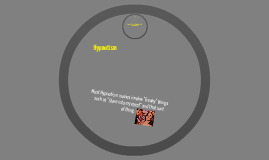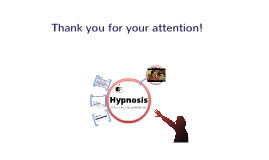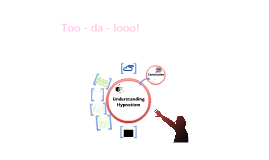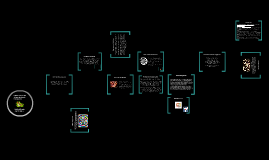Hypnosis
Transcript: Common Misconceptions Development of EEG, PET, and fMRI have enabled the effects of hypnosis on the brain to be studied like never before: (1) Identify the physiological nature of the theorized hypnotic state (2) Demonstrate baseline differences between people of varying hypnotic ability (i.e. be able to show individual capacity to respond to hypnotic suggestion, even before hypnosis is initiated) (3) Visualise the specific changes in brain function that result from individual / specific hypnotic suggestions (i.e. neural correlates of certain hypnotic suggestions) Uses as Pain Management Findings from Imaging Studies - reference to hypnosis dates back to ancient Egyptian medical papyri - Dr Franz Anton Mesmer's theory of Animal Magnetism in 1774 - Mesmer's work was investigated by a specially appointed Royal Commission in 1784 (by King Louis XVI) - Benjamin Franklin, Joseph Guillotin, and Antoine Lavoisier - who, following their investigation, discredited his work saying it was a simple matter of "touching, imagination [and] imitation" 1. RICK NAUERT PHD. Researchers Discover Evidence of Hypnotic State[Internet]. Academy of Finland. 2011 [cited 26 Oct 2011]. Available From: http://psychcentral.com/news/2011/10/26/researchers-discover-evidence-of-hypnotic-state/30769.html 2. Hoi Ning Ngai. Hypnosis in Pain Management[Internet]. Dartmouth (US). 2000[cited 8 Sept 2000] Available From: http://dujs.dartmouth.edu/1999F/Hypnotism.pdf 3. G. Elkins, M. P. Jensen, D. R. Patterson. Hypnotherapy for the Management of Chronic Pain [Internet]. National Institute of Health (US). 2007 [cited 25 Sept 2009]. Available from: http://www.ncbi.nlm.nih.gov/pmc/articles/PMC2752362/ 4. Rainville P, Hofbauer RK, Bushnell MC, et al. Hypnosis modulates activity in brain structures involved in the regulation of consciousness. J Cogn Neurosci 2002; 14:887–901 5. Kosslyn SM, Thompson WL, CostantiniFerrando MF, et al. Hypnotic visual illusion alters colour processing in the brain. Am J Psychiatry 2000; 157:1279–84 6. Jensen SM, Barabasz A, Barabasz M, et al. EEG P300 event-related markers of hypnosis. Am J Clin Hypn 2001; 44:127–39 7. Rainville P, Duncan GH, Price DD, et al. Pain affect encoded in human anterior cingulate but not somatosensory cortex. Science 1997; 277:968–71 8. Liossi C, Hatira P. Clinical hypnosis in the alleviation of procedure-related pain in pediatric oncology patients. Int J Clin Exp Hypn 2003; 51:4–28 9. Montgomery GH, DuHamel KN, Redd WH. A meta-analysis of hypnotically induced analgesia: how effective is hypnosis? Int J Clin Exp Hypn 2000; 48:138–53 10. Lang EV, Benotsch EG, Fick L J, et al. Adjunctive non-pharmacological analgesia for invasive medical procedures: a randomised trial. Lancet 2000; 355:1486–90 11. Hawkins RMF. A systematic meta-review of hypnosis as an empirically supported treatment for pain. Pain Rev 2001; 8:47–73 12. Hofbauer RK, Rainville P, Duncan GH, et al. Cortical representation of the sensory dimension of pain. J Neurophysiol 2001; 86: 402–11 The State of Hynosis Evidence for the use of hypnosis in pain management To be 'mesmerized' by something, the word itself having hypnotic and illusional connotations, derives from the works of Dr Franz Anton Mesmer (BOOM! Put that in ya pipe and smoke it, AY?!) In their study, Rainville et al. presented subjects with a hypnotic intervention to change the distress associated with pain, rather than the perception of pain itself (the study found that suggesting increased or decreased unpleasantness of pain was accompanied by rCBF changes in the anterior cingulate gyrus). A follow-up study gave hypnotic suggestions for increased or decreased pain intensity associated with immersion of subject's hands in hot water, and this showed significant rCBF differences in the somatosensory cortex, in response to these suggestions. History of Hypnosis Continued... Skill of hypnosis is fairly easy to learn Certification if fairly easy to obtain Most important factor is that the practitioner be qualified to treat the presenting complaint without the use of hypnosis Practitioner should have a relevant and real qualification in another area 1. When hypnotised, the subject can be made to do anything 2. While under hypnosis, a person can be made to reveal deep, personal secrets 3. Only 'gullible,' or 'stupid' people can be hypnotised Study conducted by Patterson et al, showed that 30 burn patients undergoing debridement were assigned to 3 groups: hypnosis, attention/pseudo hypnosis (placebo), and no intervention (control) Results: True hypnosis group - 46% decrease in pain Placebo Group - 16% Control Group - 14% Therefore significant improvement with hypnosis, goes beyond just relaxation. A trance like state of altered consciousness that resembles sleep but is induced by a person, whose suggestions are readily accepted by the subject What is hypnosis? By Shashi Pantula and Tim Styles Further studies.. Researchers from Finland and Sweden found evidence showing the existence

















